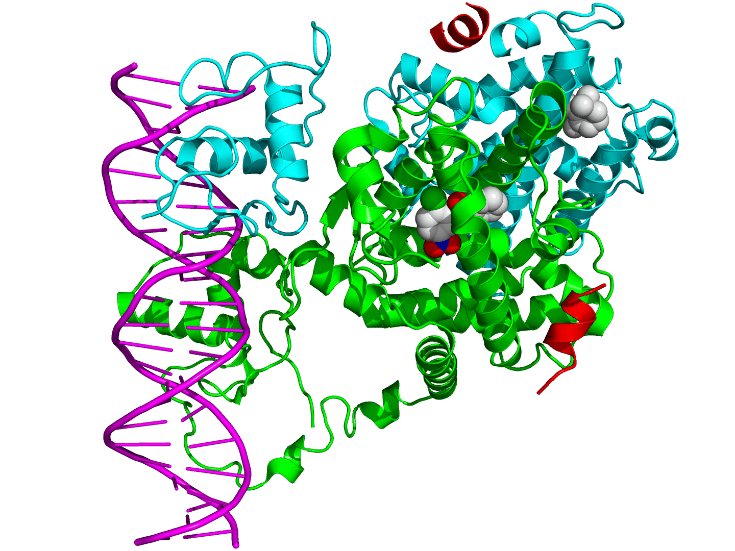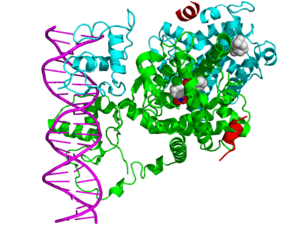Integrated transcriptional analysis of diseases of the liver
Team 4 – INSERM U1011 – Lille University – CHU Lille – Institut Pasteur de Lille

Presentation
Liver diseases of metabolic origin have important long-term repercussions not only on the liver itself, which can evolve into cirrhosis or even liver cancer, but also at the cardiovascular level. The mechanisms underlying the pathological evolution of this organ subjected to moderate but repeated metabolic attacks are identified in their broad outlines, but the causative and aggravating factors of this evolution remain unknown. These grey areas are a significant obstacle to the development of effective and well-tolerated therapies, requiring the identification of molecular actors that constitute potential therapeutic targets. The adaptive responses of the liver to variations in its environment are largely based on signaling pathways modifying the transcriptional activity of the different cell types constituting this organ. By characterizing their alterations in pathological conditions both in humans and in experimental models, our projects identify key processes of liver dysfunction in pathologies such as NASH and fibrosis, which are increasingly prevalent in diabetic patients.
Highlights
- There is currently no drug treatment for non-alcoholic steatohepatitis (NASH), also known as the soda or fatty liver disease. This disease, which can progress to cirrhosis, is on the rise; 1 person out of 5 is affected in France. Our team has analyzed more than 900 liver biopsies from obese patients. Using gene expression analysis and bioinformatics approaches, we have been able to very finely characterize a signature that reflects the evolutionary stage of the disease. This signature differs according to sex. This work opens up very interesting perspectives in the field with future therapeutic applications. This innovative work was published in the journal Hepatology (Vandel et al. Hepatology. 2020 May 11. doi: 10.1002/hep.31312). At the molecular level, the initial phases of NASH are characterized by a stress of the endoplasmic reticulum, which is initially a protective response aimed at shielding the liver from damages induced either by chemical, bacterial or dietary aggression. Our work has shown that one of the responses to preserve liver integrity is to promote a shutoff of the liver’s metabolic functions, in order to direct cellular responses towards a more efficient repair of the liver tissue (Dubois et al., Molecular Systems Biology, 2020). This work has been funded by grants from the Fondation pour la Recherche Médicale (labeled team, DEQ20150331724), the Fondation de France (Grant 2014 00047965), the European Genomics Institute for Diabetes (E.G.I.D., ANR10-LABX-46) and the European Commission (Hepadip FP6-018734 and FP7 Resolve, FP7-305707), the U.S. National Institutes of Health (NIH 1RO1CA251698-01), the Texas Institute for Cancer Prevention and Research (CPRIT RP180349 and RP190077) and the Welch Foundation (I-1805).
Members
Philippe LEFEBVRE
DR1 Inserm, group leader
ORCID number : 0000-0002-9366-5129
Jérôme EECKHOUTE
DR2 CNRS
ORCID number : 0000-0002-7222-9264
Alexandre BERTHIER
Post-doc
Marie GERARD
Post-doc
Manuel JOHANNS
Post-doc
Jimmy VANDEL
Post-doc
Ninon VERY
Post-doc
Manjula VINOD
Post-doc
Francesco ZUMMO
Post-doc
Clémence BOULET
CCD IPL
Julie CHEVALIER
IR Inserm
ORCID number : 0000-0003-0471-752X
Hélène DEHONDT
IE Univ Lille
ORCID number : 0000-0003-2900-4673
Céline GHEERAERT
IE Univ
ORCID number : 0000-0003-b-6363
Maheul PLOTON
IE Inserm
ORCID number : 0000-0002-1569-0070
Publications
Dubois, V.; Vankrunkelsven, W.; Gheeraert, C.; Dubois-Chevalier , J.; Dehondt, H.; Vinod, M.; Zummo, F.-P.; Güiza, F.; Ploton, M.; Dorchies, E.; Pineau, L.; Boulinguiez, A.; Duhem, C.; Rabhi, N.; E. van Kesteren, R.E.; Chiang, C.-M.; Lancel, S.; Duez, H.; Annicotte, J.-S.; Paumelle, R.; Vanhorebeek, I.; Van den Berghe, G.; Staels, B.; Lefebvre, P.; Eeckhoute, J.
Endoplasmic reticulum stress actively suppresses hepatic molecular identity in damaged liver.
Mol. Syst. Biol., 2020, (accepted April 14, 2020).
Vandel, J.; Gheeraert, C.; Staels, B., Eeckhoute, J.; Lefebvre, P.; Dubois-Chevalier, J.
GIANT : Galaxy-based tool for Interactive ANalysis of Transcriptomic Data.
Scientific Reports, (accepted October 15, 2020.
Berthier, A.; Vinod, M.; Porez, G.; Steenackers, A.; Alexandre,J.; Yamakawa, N.; Gheeraert, C.; Ploton, M.; Maréchal, X.; Chevalier-Dubois, J.; Hovasse, A.; Schaeffer-Reiss, C.; Cianférani, S.; Rolando, C.; Bray, F.; Duez, H.; Eeckhoute, J.; Lefebvre, T.; Staels, B.; Lefebvre, P.
Combinatorial regulation of cytoplasmic signaling and nuclear transcriptional events by the OGT/REV-ERBa complex.
Proc. Natl. Acad. Sci. USA, 2018 (accepted October 10, 2018), 115(47): E11033-E11042.
Ploton, M.; Mazuy, C.; Gheeraert, C.; Dubois, V.;Berthier, A.; Chevalier-Dubois, J.; Maréchal, X.;Bantubungi, K.; Diemer, H.; Cianférani, S.; Strub, J.-M.; Helleboid-Chapman, A.; Eeckhoute, J.; Staels, B.; Lefebvre, P.
The Nuclear Bile Acid Receptor FXR is a PKA- and FOXA2-Sensitive Activator of Hepatic Gluconeogenesis.
J. Hepatology, 2018 (accepted June 22, 2018), 69(5):1099-1109.
Dubois-Chevalier, J.; Dubois, V.; Dehondt, H.; Mazrooei, P.; Mazuy, C.; Sérandour, A.A.; Gheeraert, C.; Penderia, G.; Baugé, E.; Derudas, B.; Hennuyer, N.; Paumelle, R.; Marot, G.; Carroll, J.S.; Lupien, M.; Staels, B.; Lefebvre, P.*; Eeckhoute, J.
The logic of transcriptional regulator recruitment architecture at cis-regulatory modules controlling liver functions.
Genome Res., 2017 (accepted March 30, 2017), 7(6):985-996.
Keywords
Hepatic diseases ; Omics ; Nuclear receptors ; Cell identity ; Diabetes
Team contact
Philippe Lefebvre
Group leader
philippe-claude.lefebvre@inserm.fr
03 20 97 42 20


